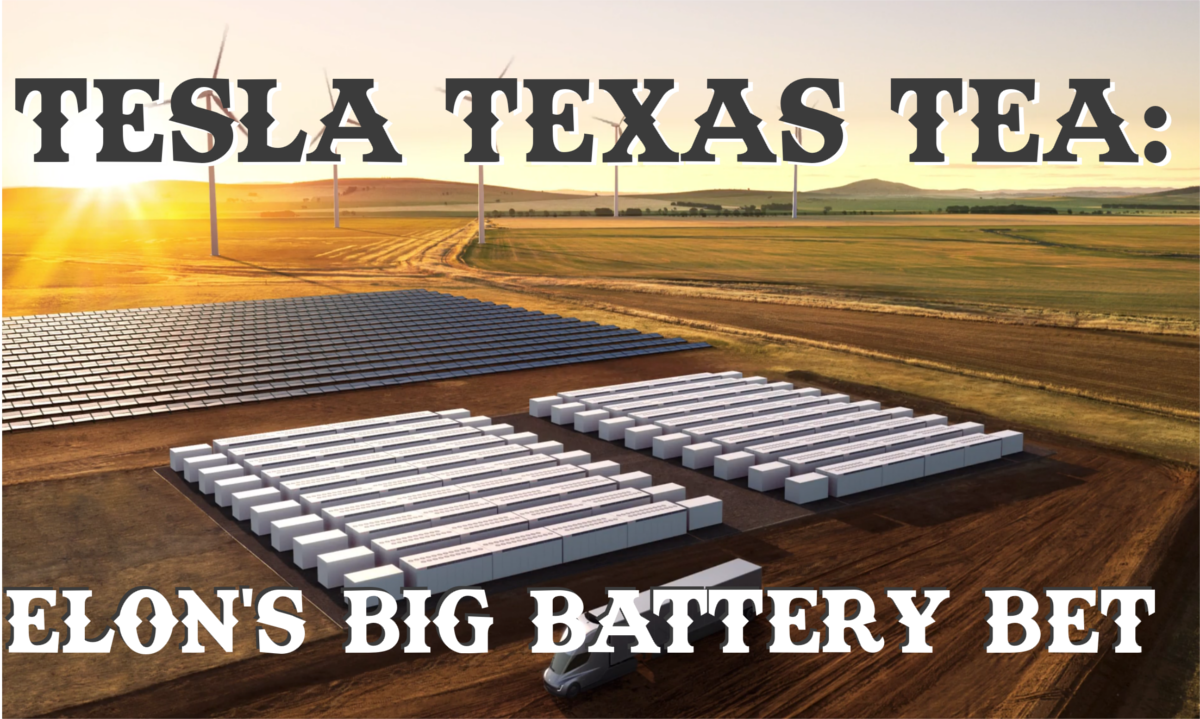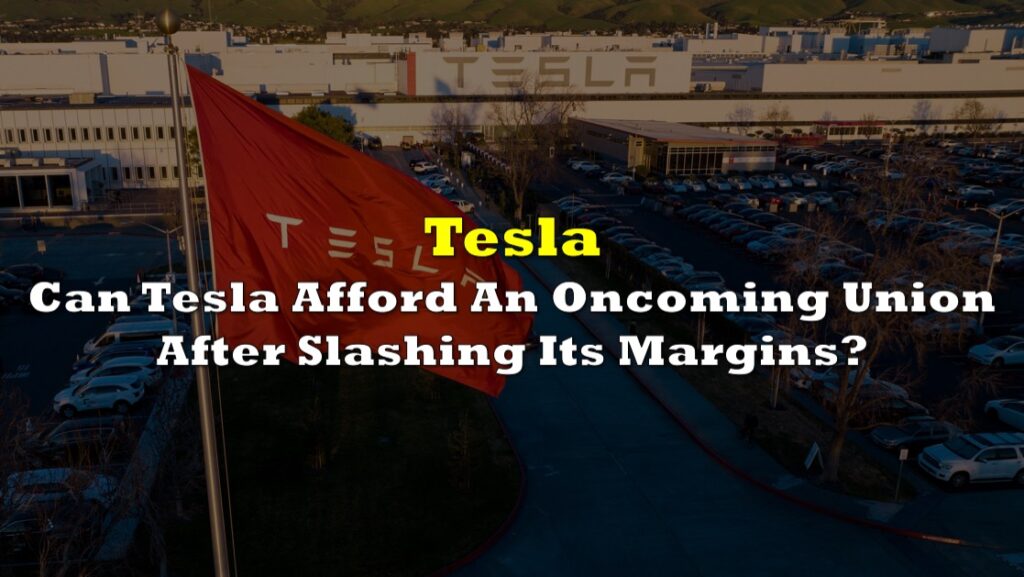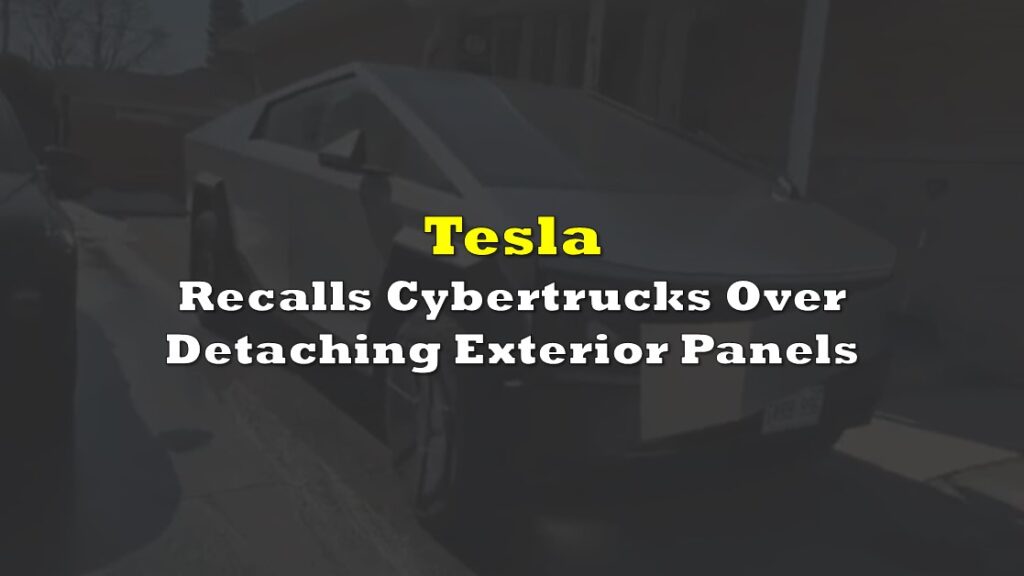It’s been a tough 2021 for Tesla Inc. (NASDAQ:TSLA), which fell below its 50 day moving average in February, and has been fighting hard against a downward trend that threatens to take it below its 220 day moving average, presently sitting around $470/share. Tesla closed Wednesday down $5.52 (-0.8%) at $668.06.

At its one year average price of $470/share, Tesla would have a $451 billion market cap, and still be the largest car company in the world by a wide margin. Toyota, second in market cap at $264 billion, sold 9.5 million vehicles last year. Tesla sold 499,600.

That seems absurd because it is absurd, but only in terms of scale. The 9.5 million vehicles that Toyota shipped worldwide in 2020 were 1.2 million fewer than it shipped in 2019: a -11.3% year-over-year decline and its first material decline in unit sales since 2011.

The hybrid electric and plug-in hybrid electric classes that Toyota pioneered still showed modest (but declining) growth as consumers increasingly chose vehicles that burn no gas at all. Toyota’s zero emission vehicle sales are so small in its grand scheme, we had to put them on a different chart. The Japanese industrial giant shipped 3,346 fully electric production vehicles in 2020, and 1,770 hydrogen vehicles.

There’s a lot going on in Tesla’s disparity of valuation, not the least of which is a low-rate environment pushing money towards riskier growth assets in a search for yield. As we’ve repeated in this space ad nauseam, Tesla’s ability to make the most of this market environment has everything to do with the way it competes in the media landscape.
Tesla, SpaceX, the Boring Company, and CEO Elon Musk’s personal eccentricities are able to work in concert to create a relentless stream of noise capable of feeding a content-hungry digital media corps until they puke. The resulting avalanche of print and video media is distributed through all available mediums, sucking up all of the oxygen and making sure everyone (everyone!) hears about each and every stunt.
Whether any given individual cares about any particular product launch or rocket launch or even remembers them the next day is beside the point. The simple message behind it all sticks to their brains like lollipops to a mini van’s carpet: “Tesla is the future.”
“I’ve got a great headline for you, but keep it on the down low.”
The latest stunt from the car company whose fans insist it isn’t just a car company (it’s a tech company!), is a “top secret” grid-connected mega-battery project in Texas. The battery project is so top secret, it managed to make headlines in the business news and the tech-news all at the same time.

Bloomberg Green reports that the 100 megawatt (MW) battery project in Angleton, TX will be large enough to power “…about 20,000 homes on a hot summer day,” but doesn’t say for how long. The project would be the second 100 MW / 129 MWh grid-connected battery array built by Tesla, following the 2017 commissioning of the Hornsdale Power Reserve in South Australia. Musk pushed that project into the news with a brash guarantee on social media that it would be done 100 days from the contract being signed, or Tesla would build it for free.
The successful installation was completed on time, and was successful enough in its grid-regulation that project owner and operator Neoen expanded it by 50 MW / 64.5 MWh in 2020. The “Tesla Big Battery” can now supply 185 MWh to the grid Down Under, helping with load management, emergency backup, etc.
The pseudo-cloak-and-dagger introduction to Tesla’s Texas battery through a fawning press allows the company to make this battery project part of its story without having to take any responsibility for it or answer any questions about it just yet, while making it clear that Tesla isn’t building just any future, it’s building a future that is relevant! A future in which it, Tesla Inc., is a vital component of the hundred-billion-dollar per year Texas energy market.

It’s less clear how these grid-scale power projects affect Tesla’s Energy Generation and Storage division, because there isn’t much about that division that is clear at all. The Tesla megapack lithium ion battery units that get chained together to make these grid-scale arrays aren’t broken out of Tesla’s Energy and Storage Division either as units or as revenue.
The megapacks, powerwall units, and solar roof installations, all together, brought in $1.994 billion in Tesla’s fiscal 2020 (ending December), up from $1.531 billion in 2019. The MD&A attributes the revenue bump in the Energy Generation and Storage business “primarily” to increased deployments in all three of the division’s product categories (solar, commercial storage, and residential storage). An equivalent bump in the section’s costs, driving the division’s gross margin down to 1% in 2020 from 12% in 2019, was also attributed “primarily” to increased deployments of megapack and powerwall units. Somehow, “under utilization of [their] solar ramp,” also added costs.

How much gross margin is it going to take to save the planet?
2020 was the first full year that Tesla Energy and Storage generated sales from its industrial scale megapack battery. Without more detailed disclosure, it’s going to be difficult to tell the degree to which the product is carrying or being carried by the residential storage and solar businesses. Such a condition contributes to the efficiency of the message, keeping the story centered on whichever division is experiencing the most success at any given moment, and how it might contribute to a bold clean-energy future, rather than getting bogged down in details like whether or not it makes money, or the size of the addressable market.
Chemical batteries aren’t the only available solution for grid-scale energy storage and, given their limited lifespan and potential to catch fire, they might not be the best one, either. Most of the active grid energy storage in the world right now, 97% of it, is comprised of pumped-hydro storage plants. Pumped hydro power storage is accomplished by using excess grid energy to pump water from a reservoir up into a higher reservoir, then using gravity to run it back into the lower reservoir through a turbine when the energy is needed. Pumped hydro projects are literally ten times larger than chemical grid battery arrays, on average, and run on gravity and water, which don’t wear out the way cells do.

They do, however, require landscapes and climates that aren’t available in Texas or Australia, making chemical storage a viable tech for grids in the hot, dry flatlands.
Grid batteries are a fairly new phenomenon, and it stands to reason that gird operators are watching the new installations’ longevity and maintenance costs closely. Other industrial companies do provide chemical battery arrays for grid installations, including fast growing clean-tech giant BYD and heavy-industry conglomerate Toshiba. The largest lithium ion battery presently serving a grid is the 230 megawatt Gateway Energy Storage Project in Southern California. It went active in June of 2020, using cells manufactured by LG Chem.
There are a few startups developing elaborate and not-so-elaborate “gravity battery” concepts that involve the raising and lowering of enormous weights to store energy without the use of water.

Swiss startup EnergyVault‘s crane-based system concept looks like an enormous game of Jenga, and we wonder about the wisdom of placing it in places with enough wind to spin the turbines whose energy it would be storing.

Scottish startup Gravitricity is developing a much simpler-looking gravity battery that sinks a single weight into an old mine shaft, but the tiny startup, whose July 2020 seed round raised £775,990, hasn’t generated anywhere near the media footprint to be taken seriously as a stock promotion. If it manages to gain any organic traction in the media, look for Tesla to buy it or copy the tech.
Information for this briefing was found via Sedar and the companies mentioned. The author has no securities or affiliations related to this organization. Not a recommendation to buy or sell. Always do additional research and consult a professional before purchasing a security. The author holds no licenses.









Eguana Posts $21 Million Order Book In Q3 2020
This morning Eguana Technologies (TSXV: EGT) released their third quarter earnings for the period ended...